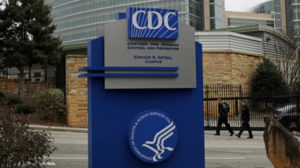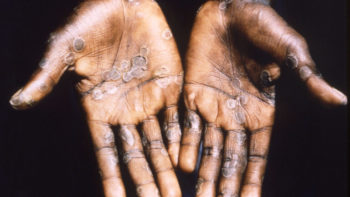Wearing COVID-19 masks helped prevent people on an airliner from getting monkeypox when they flew with a traveler who turned out to have the disease, a CDC official says.
The 43 people in Georgia who were being monitored in July for monkeypox have passed through the 21-day period for potential infection, and there were no reports of symptoms.
The monitoring of those people – flight crew and passengers – has now concluded, the state’s Department of Public Health says.
The traveler, who was diagnosed after flying from Nigeria to Atlanta and then to Dallas, is still in isolation at a Dallas hospital, says Andrea McCollum, who leads the poxvirus epidemiology unit at the CDC’s National Center for Emerging and Zoonotic Infectious Diseases.

Health care workers at the unidentified Dallas facility, as well as personal contacts of the individual, are still being monitored, she added. They are believed to be at low risk of contracting monkeypox. None is in Georgia.
Health care personnel and public health have worked well to contain and monitor the disease, McCollum said. The hospital ER staff “recognized this as something concerning, and the patient received care rapidly.’’ The monitoring by public health officials in Georgia and elsewhere was done properly, she said.
“I think this is an example of CDC working at its best,’’ McCollum told GHN. “I’m really actually impressed with the response.’’

The virus is not as transmissible as COVID-19, McCollum said.
Monkeypox was first discovered in 1958 when two outbreaks of a pox-like disease occurred in colonies of monkeys kept for research, thus leading to the naming of the disease.
It originates in various wild animals, not only monkeys, and can be transmitted if a person comes into contact with the virus from an animal, a human or contaminated materials.
The virus enters the body through broken skin, the respiratory tract, or the mucous membranes (eyes, nose, or mouth).
Animal-to-human transmission may occur by bite or scratch, through preparation of an infected animal for food, direct contact with body fluids or lesion material, or indirect contact with lesion material, such as through contaminated bedding, the CDC says. African rodent species are suspected to play a role in transmission.

Human-to-human transmission is thought to occur primarily through large respiratory droplets. Respiratory droplets generally cannot travel more than a few feet, so prolonged face-to-face contact is required.
“Monkeypox requires close contact over a long period of time,’’ McCollum said. “Masks definitely helped, particularly on the flight. We do think it provided protection.’’
There have been seven instances since 2017 where an individual traveled from Nigeria to another country and presented with illness at the destination, including the Dallas case.

